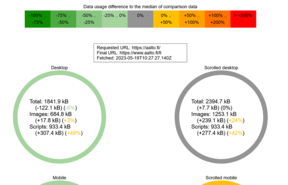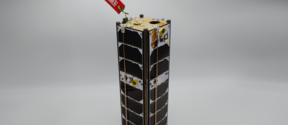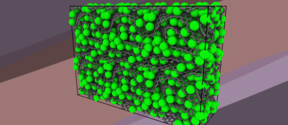A sustainable web: new tool helps webpage designers reduce runaway energy consumption

Websites may seem insubstantial, but hosting the data and sending it to users consumes energy. Researchers at Aalto University have developed a new, user-friendly service that analyses how much data a website has and suggests improvements to reduce the load.
According to some predictions, the ICT sector will be responsible for more than a fifth of global electrical energy consumption by the end of the decade. That’s partly due to the enormous growth in digital services that are delivered as webpages – in the past ten years, websites have gotten three time as big overall, and the size of mobile websites has grown tenfold.
Concerned by this trend, Professor Jukka Manner of Aalto University led a team to develop the new analysis tool. The tool reports how large a webpage is, how much data is used by different components of the page for and how to make it use less data – and thus less energy.
A sustainable web
Now available at https://greenpages.aalto.fi, this is one of the first service to give sustainability recommendations based on an analysis of a website’s data usage. The publicly available service lets anyone to examine a webpage and find out how efficiently it’s designed.
‘Our key message is that content doesn’t necessarily have to be removed but should be produced more wisely. We hope that the tool will help make the ICT sector more sustainable and promote greener service design,’ says Manner.
Analyses made with the tool will be stored in the cloud in line with open data principles. The open data will be updated as different pages are examined with the service.
Aleksi Saarinen, the research assistant who implemented the service, says that no user data is stored. Only the results of the analysis are kept: the address of the web page and its technical structure.
‘Open data lets researchers and interested citizens study the structure of websites and find interesting results and phenomena. In the long run, we can follow trends and see how websites and services are evolving,’ says Saarinen.

Continuing improvements to Aalto’s website
Energy efficiency is becoming a key factor in the development of Aalto University’s website, says Robert Salvén, Head of Digital Experience at Aalto University. Various analysis tools have been used in developing Aalto’s website, and the main areas for improvement are known.
‘Although we’ve tried to be conscious of the amount of data needed to load our website and thus our carbon footprint, this tool really opened our eyes to which elements were using the most data and how big the potential savings were. Since we started using it, we’ve been able to significantly decrease aalto.fi’s data usage – decreasing the size of our front page by over 50%, for example – but we’re not satisfied just yet,’ he says.
‘It's great that our researchers have published a tool for sustainable ICT that’s available to everyone for free. We hope that many will join us on our journey towards more sustainable and accessible digital solutions.’
Better tools, better web
Manner and the team continue developing the tool and are also planning to use data from the analyser to get insights into how websites are implemented and the source of data-heavy solutions.
‘Poor technical solutions are often the result of haste or a lack of understanding. No one deliberately makes bad solutions, but there can also be a recurring flaw in design templates or tools, for example.’
Manner offers three simple rules to help designers of data-heavy websites:
- Update images to newer file formats, such as WebP, to save data.
- Make the image resolutions match the user’s device. Sending images at higher resolutions than needed is wasteful – the images should be at the resolution that is actually used.
- Design lighter versions of webpages for mobile devices, since they have small screens, run on batteries and are often using mobile data.

Read more news

Finland’s Foresail-1p science satellite successfully launched into space
The Finnish science satellite Foresail-1p was successfully launched into space after 8 PM Finnish time on Friday 28 November 2025, aboard the Transporter-15 mission from Vandenberg Space Force Base, California.
A paradigm shift: machine learning is transforming research at the atomic scale
Assistant professor Miguel Caro and his research group use and develop machine learning tools to accelerate discoveries from simulation to experiment
Aalto academics begin Unite! visiting professorships at TU Darmstadt
As part of the Unite! Visiting Professorship Programme, TU Darmstadt welcomed six visiting professors from Aalto University for the winter semester 2025/2026.






